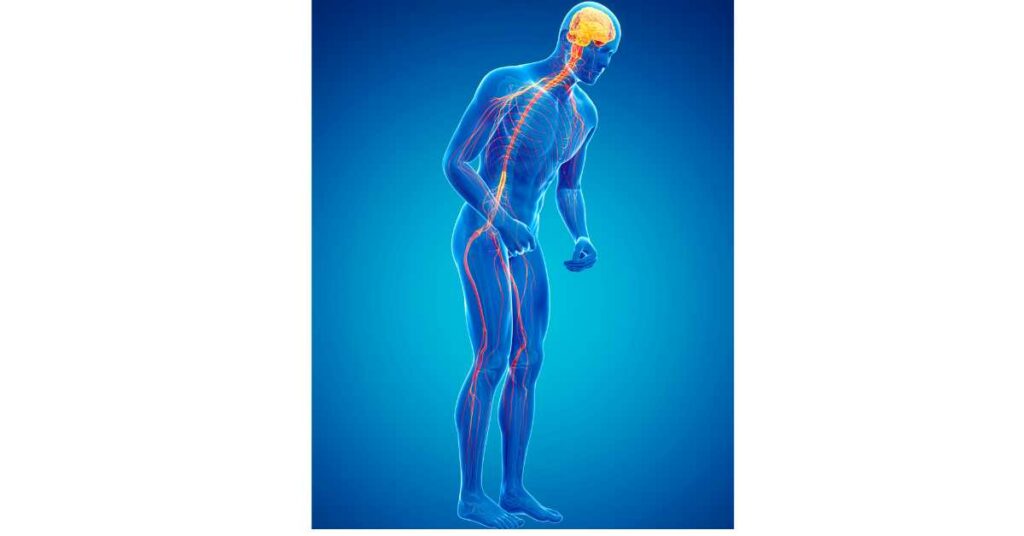Parkinson’s disease is a progressive neurological disorder that affects movement, balance, and coordination. It can cause tremors, stiffness in the limbs and trunk, slow movements, poor posture and balance issues. While there is no cure for this condition yet, many people with Parkinson’s have found relief through meditation.
In this article we will explore the potential of meditation to help those living with Parkinson’s manage their symptoms and improve their quality of life.
No, meditation cannot cure Parkinson’s disease. However, it can help manage symptoms and improve quality of life by helping to reduce stress, improve focus, and support relaxation.
Research has shown that regular meditation practice may be beneficial for those living with Parkinson’s. We will look at how it works and what types of meditations may be most effective in treating Parkinson’s disease.

What exactly is Parkinson’s disease, and how can meditation assist?
Parkinson’s disease is a chronic and progressive neurological disorder that affects movement, balance, and coordination. It is caused by the degeneration of cells in the area of the brain called the basal ganglia. As these cells die off, they are unable to produce dopamine – a neurotransmitter that plays an important role in movement control. Symptoms can include tremors, stiffness in the limbs and trunk, slow movements, poor posture and balance issues.
Meditation has been shown to be beneficial for those living with Parkinson’s as it can help reduce stress levels, improve focus and support relaxation. Research has found that regular meditation practice may improve mood and lessen symptoms such as shaking or rigidity. It can also help people with Parkinson’s develop better coping strategies for dealing with their condition.
The type of meditation used for Parkinson’s Disease usually involves mindfulness techniques where attention is focused on awareness of the moment without judgement or analysis. Mindfulness-based practices have been shown to increase activity in areas of the brain that are associated with motor control, helping to improve motor functioning in people with Parkinson’s.
Additionally, meditation can help reduce anxiety which is often a problem for those with Parkinson’s disease as well as helping them to better manage their emotions and mood changes.
In addition to mindfulness techniques some studies have suggested that Transcendental Meditation (TM) may also be beneficial for those living with Parkinson’s disease. TM has been found to reduce stress levels and promote overall feelings of wellbeing which can help those managing symptoms related to Parkinson’s disease like fatigue or depression.
Additionally, research has indicated that this type of meditation may actually lead to physical improvements in terms of improved gait and balance for those living with PD.
Overall meditation is not a cure for Parkinson’s disease but it does offer many potential benefits that can help people dealing with this condition manage their symptoms more effectively and improve their overall quality of life.
What are the benefits of meditation for people with Parkinson’s disease?
The benefits of meditation for people with Parkinson’s disease are numerous and include:
• Reduced stress levels: Meditation helps to manage stress, which is especially important for those living with Parkinson’s as it can help reduce physical symptoms like tremors or stiffness. Additionally, regular practice of meditation can increase the ability to respond calmly to difficult situations, promoting feelings of peace and relaxation.
• Improved focus: Regular practice of meditation can improve focus and concentration allowing sufferers to better manage their day-to-day activities. Mindfulness techniques such as paying attention to breathing and body sensations can be used to stay in the “present moment” and bring back focus when needed.
• Support relaxation: Meditation helps create a state of deep relaxation which is beneficial for those living with Parkinson’s as it can help reduce muscle tension and ease stiffness in the limbs and trunk. Additionally, it may also help people fall asleep more easily and have a better quality of sleep overall.
• Improved mood: Research has found that regular practice of meditation can lead to improved mood in those with Parkinson’s disease, helping them become less irritable and anxious. It also allows them to better manage their emotions by teaching strategies for accepting uncomfortable feelings without getting overwhelmed or stuck in negative thought patterns.
• Better coping strategies: Regular practice of meditation encourages reflection on emotions, thoughts, behaviors, and reactions; this allows those with Parkinson’s disease to develop better coping strategies for managing their condition on a daily basis. This includes learning how to be flexible and accepting of change – something that is especially important when dealing with a chronic illness like PD.
• Improved motor functioning: Studies have suggested that mindfulness-based practices such as meditation may actually lead to physical improvements in terms of improved gait and balance for those living with PD. Additionally, mindfulness techniques may help increase activity in areas of the brain that are associated with motor control, leading to greater coordination and smoother movements over time.
In summary, meditation offers many potential benefits that can help people dealing with Parkinson’s Disease manage their symptoms more effectively and improve their overall quality of life. With regular practice it can reduce stress levels, improve focus, support relaxation, improve mood, promote better coping strategies, as well as potentially lead to physical improvements such as improved gait or balance control over time.
Why is it a challenge to follow meditation for most Parkinson’s disease patients?
The challenge of following a regular meditation practice for people with Parkinson’s disease lies in the fact that it can be difficult to find the time and motivation to do so. Many Parkinson’s patients experience physical symptoms such as tremors, stiffness and fatigue which can make it hard to sit still for long periods of time and concentrate on their breath or body sensations.
Additionally, many people with PD may struggle with cognitive issues such as difficulty concentrating or staying focused; this can make it challenging to stay in the present moment during meditation practice.
Furthermore, there is evidence that suggests that regular physical activity is beneficial for people with PD; however this can also take away from time available for meditation practice.
Finally, there are psychological factors at play as well such as depression or anxiety which can make it difficult to find the motivation or energy for a daily practice even if one knows it would be beneficial.
In order to overcome these challenges, people living with Parkinson’s disease may need to seek out additional support or resources in order to establish a successful daily meditation practice. This could include seeking out experienced teachers who specialize in working with those living with chronic illnesses like Parkinson’s, joining online meditation communities or accountability groups, investing in assistive technology such as mindfulness apps or audio recordings, and utilizing guided meditations tailored specifically for those dealing with PD. These resources can help provide structure and support during times when motivation may be lacking due to physical or psychological symptoms related to the condition.
Overall, establishing a consistent and meaningful meditation practice while living with Parkinson’s disease can be quite challenging but not impossible. With dedication and determination, those living with this condition can learn how to tap into the healing power of mindfulness and reap its many benefits both psychologically and physically.
When is the ideal time to meditate for Parkinson’s patients?
When it comes to establishing a regular meditation practice for people living with Parkinson’s disease, the key is finding an ideal time that works best for them. This may be different for every individual, depending on their individual needs and lifestyle. However, certain times of day may be better or more beneficial than others.
For example, morning meditation can be particularly helpful in providing clarity and focus throughout the day as well as helping to reduce stress levels while setting a positive tone for the rest of the day. Morning practices can also help promote better sleep at night which is especially important for those dealing with PD-related insomnia issues.
Additionally, research has suggested that morning meditation may even help enhance physical abilities like balance and coordination.
In contrast, evening meditation may be best for those dealing with anxiety or depression related to Parkinson’s disease since it can help provide a sense of peace and relaxation going into bedtime. Studies have also found that when done before bed, mindfulness-based practices like meditation can result in improved sleep quality by reducing rumination and intrusive thoughts related to this condition.
Finally, midday meditations can also offer great benefits such as increased overall energy levels throughout the day as well as improved concentration and focus which is especially important for those with cognitive impairments due to Parkinson’s symptoms. Regular midday activities may also provide relief from pain associated with PD by promoting relaxation of tense muscles or calming overactive motor areas of the brain.
Ultimately, there is no one-size-fits-all answer in terms of finding the perfect time to meditate for people dealing with Parkinson’s Disease – it will depend on each person’s unique needs and schedule. It’s important to experiment with different times in order to find out when works best for them both physically and psychologically so they can reap all of the potential benefits that mindfulness-based practices like meditation can offer when living with this condition.
Is there a most effective meditation method to benefit people with Parkinson’s disease?
When it comes to finding the most effective meditation method for people living with Parkinson’s disease, there is no one-size-fits-all answer. While many forms of meditation have been studied for their potential benefits for those managing this condition, what works best will depend on each person’s individual needs and preferences. That being said, here are a few popular methods that may be especially helpful in terms of promoting physical and psychological wellbeing while living with Parkinson’s:
Mindfulness Meditation: This type of practice focuses on bringing awareness to the present moment in order to cultivate greater acceptance and non-judgmental attitude towards difficult emotions or physical symptoms related to PD. By learning to observe and shift attention away from unhelpful thoughts or sensations without judgment or resistance, mindfulness can help reduce anxiety levels, improve moods, and foster a sense of peace.
Yoga Nidra: This type of guided relaxation technique combines elements from yoga, meditation, breathwork, visualization, and chanting in order to bring about deeper states of relaxation. It has been found beneficial for those living with chronic conditions such as Parkinson’s due to its ability to promote both physical and mental restorative states which can lead to improved energy levels throughout the day.
Tai Chi: This ancient Chinese martial art is known for its gentle movements which integrate mindfulness practices with postural alignment and movement coordination techniques. Furthermore, research has suggested that regular Tai Chi practice can help improve balance and stability in people living with PD as well as increase strength in areas affected by the disease such as the arms and legs.
Qi Gong: Qi Gong is another form of traditional Chinese exercise that combines slow movements with various breathing techniques and meditative practices rooted in traditional Chinese medicine (TCM). Its combination of gentle physical exercises combined with mindful awareness can help reduce stress levels while increasing overall body awareness which can be especially beneficial for those dealing with any form of mobility impairments related to this condition.
Ultimately, by experimenting with different types of meditation practices tailored specifically for those dealing with Parkinson’s Disease – including online resources or experienced teachers who specialize in this area – individuals can find the best approach that helps them cope better emotionally and physically while managing this condition on a daily basis.
Simple guidance to start a meditation practice to manage symptoms of Parkinson’s disease.
Meditating can be a helpful tool for managing the symptoms of Parkinson’s Disease. However, it is important to find a method that works best for you. Some popular methods that could be beneficial include mindfulness meditation, yoga nidra, tai chi, and qi gong. Here are some simple steps to get started:
- Choose a comfortable place to practice, where you lay down undisturbed for the duration of your session.
- Set aside 10-15 minutes each day to dedicate to your practice. If possible, try to find a consistent time that works best for you and stick to it.
- Begin your practice by focusing on your breath and the sensation of air entering and leaving the body.
- Once you feel settled, start to explore any sensations or physical limitations associated with Parkinson’s Disease that you may be experiencing in the present moment.
- Notice any thoughts, feelings, or emotions that come up without judgment or resistance.
- If your mind wanders away from the present moment, simply bring your attention back to your breath as a way of anchoring yourself in the here and now.
- Once you feel ready, slowly move out of the meditation by gradually bringing awareness to any physical or mental changes that have occurred since beginning this practice.
- Lastly, take a few moments to reflect on your experience and give yourself some gratitude for taking the time to cultivate self-care.
By following these steps, you should be able to establish a regular meditation practice for managing symptoms of Parkinson’s Disease. With regular practice, you may gradually begin to notice improved mental clarity, increased energy levels, and improved balance and coordination. Good luck!
Conclusion
Overall, meditation can be a powerful tool for managing the symptoms of Parkinson’s Disease. By taking some time each day to practice mindfulness, tai chi, qi gong or another form of meditation suited to your needs and abilities, you may begin to experience improved mental clarity, increased energy levels, and enhanced balance and coordination. With regular practice over an extended period of time, these improvements should become more evident as you continue on your journey towards better health. So get started today – take that first step towards self-care through mindful meditative practices!




